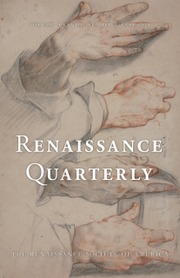A good microhistory has a difficult mission: the author has to present a good (little) story that at the same time teaches us bigger, more complicated lessons than those immediately apparent in the story itself. Such connections are often a stretch. Katie Harris in her latest book offers us a lesson on how to do it right, when to focus small and when to expand big, how to take what could be a little slapstick story of lies and folly and make it an opportunity to think about truth, authenticity, and history. Her first book, From Muslim to Christian Granada (2007), dealt with a more famous case of religious-historical fraud, the discovery of the lead tablets (plomos) of Granada that allegedly established that city’s ancient Christian past. In that earlier book as well as in this one, the author is both scholarly and entertaining, embracing complexity while never losing her grace.
The story is as follows. In 1655, two members of the Calced Trinitarians in Rome stole the relics of Saint John of Matha (actually not quite a saint), founder of the Trinitarian order and a member of the rival Discalced branch. The relics found their way to Spain and became the focal point of a decades-long effort to resolve the sainthood issue. More of interest to us, they provided an excuse for the writing of history, much of it invented.
The heart of the book is chapter 3, which describes one of the most interesting components of the story. Twenty years before the theft, an inventive Trinitarian friar named Juan Figueras Carpi had written an alleged history of the order, giving it a new past and an outstanding religious figure clearly worthy of sainthood. These document-based efforts to bolster the order failed, which probably was what inspired the 1655 theft. When Figueras’s works proved insufficient for the job, the order turned to another forger, Antonio Lupián Zapata, a lay notary and chronicler, who produced five volumes chronicling the history of the order including many heretofore unknown details of Matha’s life. A key element of the order’s seventeenth-century historical campaign was an alleged fourteenth-century papal “English breviary” describing the honors due to John, a fragment (or a copied fragment) of which had lain on Matha’s skull in the coffin. In Harris’s words, “The hagiographic facts they manufactured became cornerstones of Trinitarian history and, by extension, load-bearing supports in the case for the identity of Matha’s remains” (105).
The arbiter of the conflict, both between the two branches of the Trinitarians and also regarding the truth of the Calced claims, was the Vatican—specifically, the Congregation of Sacred Rites, established in 1588. If the relics, which were stored in the nuncio’s chapel in Madrid after the theft, were not proven to be Matha’s (and, a similar but not identical question, if they were not the same bones that had once been in Rome), then neither of the order’s branches could claim them, nor could his sainthood be established. Without that, the order might lose its lucrative role as a redeemer of Christian captives in North Africa, a monetary stream already slipping out of its hands into those of the rival Mercedarians.
Harris provides an immensely erudite parsing of the Vatican’s probative task, which in 1669 resulted in its rejecting the order’s claims. The judges wanted more evidence, especially written evidence. As Harris points out, this preference for documentation was “at least in part a response to both Protestant and Catholic reforms, whose devastating criticisms laid bare the questionable beliefs and practices at work in the traditional veneration of the saints and their bodies” (136). The order returned in 1715, losing again, and finally in 1721 was rewarded with success, an outcome that apparently owed as much to infighting among cardinals as it did to the evidence presented. The relics remained in Madrid, survived Spain’s 1830s exclaustration, resided in a private home during the Second Republic, were stolen yet again, and then landed in Madrid’s San Isidro church. Today they are in Salamanca.
So, to return to the challenges of a microhistory: this book tells a little story, includes religious history (the order, sainthood) and political history (the Vatican), and further provides an epistemological framework for understanding why all this matters. It is an excellent book.



